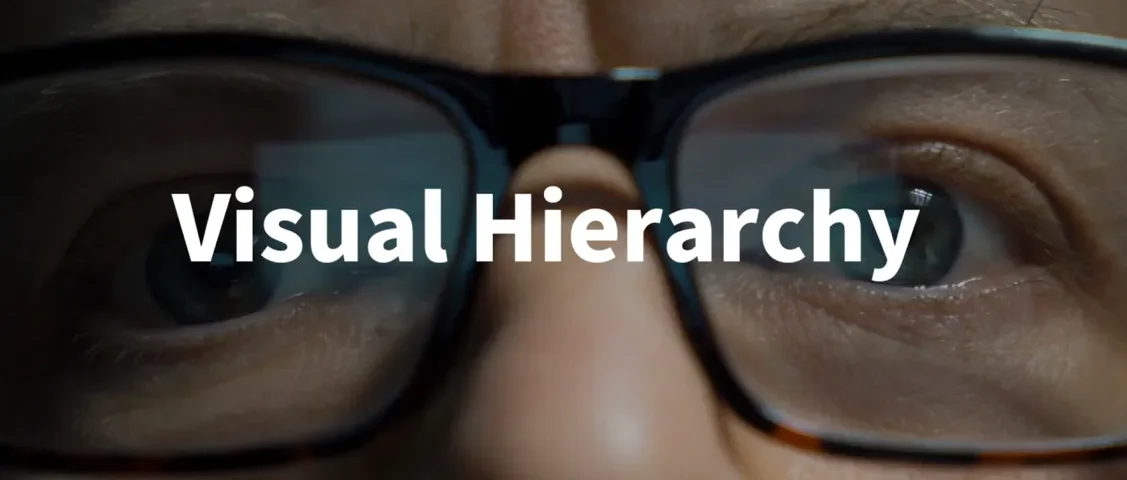The Ultimate Guide to Visual Hierarchy: Enhancing Your Design’s Effectiveness

The Ultimate Guide to Interaction Design: Crafting Engaging User Experiences
May 22, 2024
The Ultimate Guide to Illustration: Enhancing Visual Communication
May 22, 2024The Ultimate Guide to Visual Hierarchy: Enhancing Your Design’s Effectiveness
Introduction to Visual Hierarchy
Visual hierarchy is a fundamental principle in design that arranges elements to guide the viewer’s eye through the content in order of importance. It leverages size, color, contrast, alignment, and spacing to create a clear path for users to follow, ensuring that the most critical information stands out.
Thank you for reading this post, don't forget to subscribe!Why Visual Hierarchy is Important
Visual hierarchy is crucial because it helps users process information quickly and efficiently. By strategically placing and styling elements, designers can lead users through a narrative, highlight key messages, and improve overall user experience. This method ensures that users can effortlessly find and understand the content they are looking for.
Key Elements of Visual Hierarchy
Size and Scale
Size is one of the most powerful tools in establishing visual hierarchy. Larger elements naturally draw more attention, making them ideal for headlines or calls to action. Smaller elements recede into the background, supporting the primary message.
Color and Contrast
Color can differentiate elements and signify importance. High contrast between elements can highlight key areas, while softer contrasts can create subtlety and depth. Using a consistent color scheme can also reinforce brand identity and guide the user through the design.
Typography
Typography involves the strategic use of fonts, sizes, and weights to establish hierarchy. Headings, subheadings, and body text should be distinct from one another. Bold and larger fonts can denote importance, while italic or lighter fonts can de-emphasize secondary information.
Alignment and Spacing
Proper alignment and spacing create order and clarity. Elements that are aligned properly are easier to follow and look more professional. Adequate spacing between elements ensures that the design is not cluttered and that each component has room to breathe.
Imagery and Icons
Images and icons can significantly impact visual hierarchy. Relevant and well-placed visuals can draw attention and break up text, making the content more engaging. Icons can guide users through tasks and highlight important actions.
Creating Effective Visual Hierarchy
Identify the Focal Point
Determine the most critical element on the page and ensure it stands out. This could be a headline, a call-to-action button, or an important piece of information. Use size, color, and placement to make this element the focal point.
Use a Grid System
A grid system helps in organizing content and maintaining consistency. It ensures that elements are aligned and proportionate, making the design easier to navigate. Grids can range from simple two-column layouts to complex modular grids.
Apply the Rule of Thirds
The rule of thirds divides the design into nine equal parts using two horizontal and two vertical lines. Placing key elements along these lines or at their intersections creates a balanced and visually appealing composition.
Leverage Negative Space
Negative space, or whitespace, is the empty space around elements. It helps in reducing clutter and emphasizes the content by allowing elements to stand out. Adequate negative space improves readability and creates a clean, modern look.
Consistent Use of Styles
Consistency in styles, such as color schemes, fonts, and iconography, reinforces visual hierarchy and makes the design cohesive. Inconsistent styles can confuse users and diminish the effectiveness of the hierarchy.
Best Practices for Enhancing Visual Hierarchy
Prioritize Content
Ensure that the most important content is easily accessible and prominent. Users should not have to search for critical information. Prioritizing content involves placing it at the top of the page or making it stand out through design elements.
Test and Iterate
User testing is essential to understand if your visual hierarchy is effective. Gather feedback and observe how users interact with your design. Use this data to make iterative improvements, ensuring that the hierarchy aligns with user expectations.
Adapt for Different Devices
Responsive design ensures that your visual hierarchy remains effective across different devices and screen sizes. Test your design on various devices to ensure that it maintains its clarity and usability, regardless of the platform.
Common Mistakes to Avoid
Overcomplicating the Design
Too many elements can overwhelm users and obscure the intended message. Keep the design simple and focused, ensuring that each element serves a purpose and contributes to the overall hierarchy.
Ignoring Consistency
Inconsistent use of styles can confuse users and disrupt the flow of the design. Maintain consistency in fonts, colors, and spacing to create a cohesive and intuitive experience.
Failing to Consider User Experience
Design should always prioritize the user experience. Elements should be placed based on how users naturally interact with the interface. Ignoring user behavior can lead to a confusing and ineffective design.
Conclusion
Visual hierarchy is a critical aspect of effective design, guiding users through content in a logical and engaging way. By leveraging size, color, typography, alignment, and imagery, designers can create clear and intuitive interfaces. Adhering to best practices and avoiding common pitfalls ensures that your design not only looks good but also functions well, enhancing the overall user experience.
For more information: www.ecbinternational.com


